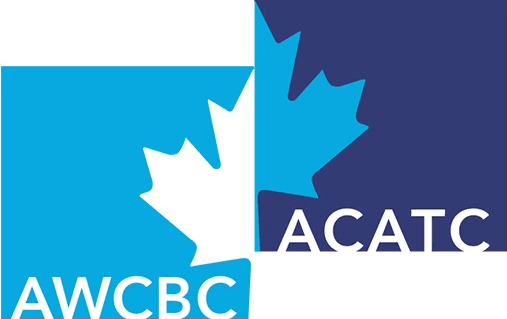Overview: Tariffs and Canada’s Worker Compensation System
Canada’s economy is highly reliant on trade with the U.S. – for example, about 73% of Canadian exports go to the United States, and roughly 60% of Canada’s agri-food exports head south. U.S. tariffs can therefore have broad ripple effects on Canadian industries, wages, and job security. Tariffs act as a tax on Canadian goods entering the U.S., raising their cost and reducing demand. This can lead to slower production, lower profits for Canadian firms, and potentially layoffs or wage freezes for workers in affected sectors.
Recent U.S. trade measures – such as tariffs on steel, aluminum, and other imports – have disrupted cross-border supply chains and added uncertainty. Canada has responded in kind (for example, imposing surtaxes on $16.6 billion of U.S. goods in 2018), which raises prices domestically for certain products. This tit-for-tat raises costs for businesses and consumers on both sides of the border, dampening investment and hiring plans.
Manufacturing and Automotive: Higher Costs and Job Pressures
U.S. tariffs on steel, aluminum, and other industrial inputs directly increase costs for Canadian manufacturers. For example, the 2018 U.S. tariffs caused Canadian steel exports to the U.S. to plunge by 38%, squeezing mills and downstream factories. Companies facing pricier inputs and potential loss of U.S. customers have seen profit margins tighten, forcing difficult choices on cost-cutting.
With higher costs and shrinking export sales, manufacturers have warned of job risks. Canadian labour groups estimate that tens of thousands of jobs are at risk from U.S. metal tariffs – in the steel and aluminum sector alone, about 43,000 Canadian jobs could be threatened by renewed U.S. duties, with 9,500 direct jobs endangered in aluminum production.
The auto industry exemplifies the tariff impact due to its deeply integrated supply chain. Car parts routinely cross the Canada–U.S. border multiple times during assembly. A tariff applied at each crossing drastically amplifies production costs, which can price Canadian-assembled vehicles out of the market.
Agriculture and Agri-Food: Market Access and Farm Incomes
Canada’s agriculture and agri-food sector is deeply tied to the U.S. market. Roughly 60% of Canada’s agri-food exports go to the U.S., from beef and pork to grains and processed foods. This means any U.S. tariff or import restriction on Canadian farm products can directly reduce demand and prices for Canadian farmers.
A prominent example of U.S. trade pressure on Canadian agriculture is in the dairy sector. Under the USMCA (CUSMA) agreement, Canada agreed to allow more U.S. dairy, poultry, and eggs into the country, which cuts into the market share of Canadian farmers. To offset expected income losses for farmers, the federal government has earmarked nearly $5 billion in compensation for supply-managed sectors.
Energy and Natural Resources: Indirect Impacts on Wages and Investment
Energy is Canada’s single largest export to the U.S. by value – crude oil and natural gas make up roughly one-third of Canada’s exports to the U.S. by value. Notably, the U.S. has not directly imposed tariffs on Canadian oil or gas. However, broad U.S. tariff measures that slow global economic growth can reduce overall demand for energy.
Tariffs also raise costs for critical inputs to resource sectors, dampening new investments. Canadian companies in mining and energy rely heavily on imported machinery, equipment, and specialized steel products (like pipelines and drilling equipment) from the U.S. Retaliatory tariffs by Canada on U.S. steel or equipment, along with a weaker Canadian dollar, make these capital goods more expensive.
Labor Market Trends and Worker Compensation
Slower Employment Growth: The uncertainty and costs associated with U.S. tariffs have translated into weaker overall job growth in Canada. Recent labor data show a sharp contrast between a resilient service sector and a struggling goods-producing sector. For example, in one recent month (February 2025), the Canadian economy added only about 1,000 net jobs, as gains in services were almost completely offset by losses in manufacturing and other goods-producing industries. The goods-producing sector – which stands to lose the most under tariffs – shed roughly 19,500 positions, while services added about 20,600, barely making up the difference.
This flat job growth indicates that businesses facing tariff-related risks have become hesitant to hire. In fact, in anticipation of tariffs, some firms temporarily boosted production and hiring to stockpile inventory, only to pull back afterward.
This “front-loading” of economic activity can create short-lived job spurts followed by slowdowns, leaving the labor market choppy and uncertain.
Shift to Part-Time and Precarious Work: Tariff impacts can also change the composition of jobs available. Manufacturers and exporters under financial strain may cut full-time positions or reduce worker hours to lower costs. The same February report showed that nearly 20,000 full-time jobs were lost, while 20,800 part-time jobs were gained – suggesting that some workers were shifted from secure full-time roles to more precarious part-time positions.
In many cases, if an export-oriented factory cuts production, a laid-off worker might only find replacement work in lower-paying service or gig-economy jobs. The result is an underemployment problem: people might still be working, but not at their full potential or desired hours. This shift undermines overall wage growth and job quality – even if the headline unemployment rate doesn’t spike immediately. It also puts stress on Canada’s worker compensation systems (like Employment Insurance), as more people may rely on supplemental income support or retraining programs when good full-time jobs become scarce.
Wage Growth and Inflation Pressures: When firms face higher input costs or sagging sales due to tariffs, they often look to trim labor expenses to stay afloat. This can mean smaller wage increases or pay freezes for workers in impacted industries. Indeed, in sectors where tariffs have hit hard, employers have little room to raise pay – resources that might have gone to wage hikes are instead absorbed by tariff costs or lost profits. At the same time, tariffs on consumer goods (and Canada’s own retaliatory tariffs) have raised prices on some items, adding a bit of upward pressure to inflation.
Workers effectively get squeezed from both sides: on one hand, their pay isn’t rising as fast due to corporate belt-tightening; on the other hand, the cost of living increases for everyday products like groceries, appliances, or farm supplies that became more expensive under tariff regimes. This combination erodes real incomes (inflation-adjusted earnings). While these price increases from tariffs are generally one-time shocks, they still diminish consumers’ purchasing power in the short run and can influence expectations in wage negotiations. In summary, tariffs tend to temper wage growth in affected sectors while also acting like a pay cut by making many goods pricier for Canadian households.
Government and Policy Responses: To cushion the blow to workers, Canadian policymakers have stepped in with support measures. During the 2018 tariff showdown, Ottawa provided up to $2 billion in aid for affected steel, aluminum, and manufacturing businesses and their employees
This included extending Employment Insurance work-sharing agreements (so companies could reduce hours instead of outright laying off staff) and funding for worker retraining and adjustment programs.
Similar relief measures are being prepared in response to current tariff threats – including direct assistance to industries and communities hit by U.S. trade actions. The Bank of Canada has also adjusted its stance: analysts note that the central bank stands ready to cut interest rates to stimulate the economy if broad-based tariffs seriously threaten growth.
These responses are aimed at maintaining labor market stability – propping up industries to prevent mass layoffs, helping displaced workers find new opportunities, and preserving wages where possible. In effect, the government and central bank are acting as a buffer between U.S. trade shocks and Canadian workers’ well-being.
Broader Labor Market Outlook: In the long run, persistent U.S. tariffs could accelerate structural shifts in Canada’s labor market. Sectors less exposed to U.S. trade – such as technology, finance, healthcare, and education – may continue to grow and absorb some of the workers displaced from trade-sensitive industries, whereas traditional manufacturing and some resource-extraction roles could decline faster. There is optimism that Canada can adapt by diversifying its trade partners and investing in new industries. For instance, Canada is actively courting investments in clean energy, technology, and advanced manufacturing as a way to strengthen domestic supply chains and create jobs less dependent on the U.S.
(Recent examples include new large-scale electric vehicle battery plants and renewable energy projects being launched in Ontario and Québec.) Nonetheless, the transition may be painful in the short term for workers in shrinking sectors. This puts a premium on skills retraining and education – workers may need to learn new trades or move to different regions to find comparably paid work. Overall, the turbulence caused by tariffs highlights the importance of proactive labor policies and economic strategies to ensure Canadians can continue to find well-compensated employment, even as the landscape of international trade shifts.
Conclusion: Navigating the Tariff Impact
Current U.S. tariffs and trade measures are clearly weighing on Canada’s labor market and worker compensation. Manufacturing, agriculture, and energy are bearing the brunt, with job losses, wage stagnation, and investment slowdowns. Despite these challenges, Canada is actively pursuing strategies to mitigate the impact, including trade diversification, policy interventions, and economic adjustments.
Reference:
Kassen.ca
cfa-fca.ca
bankofcanada.ca
policyalternatives.ca

